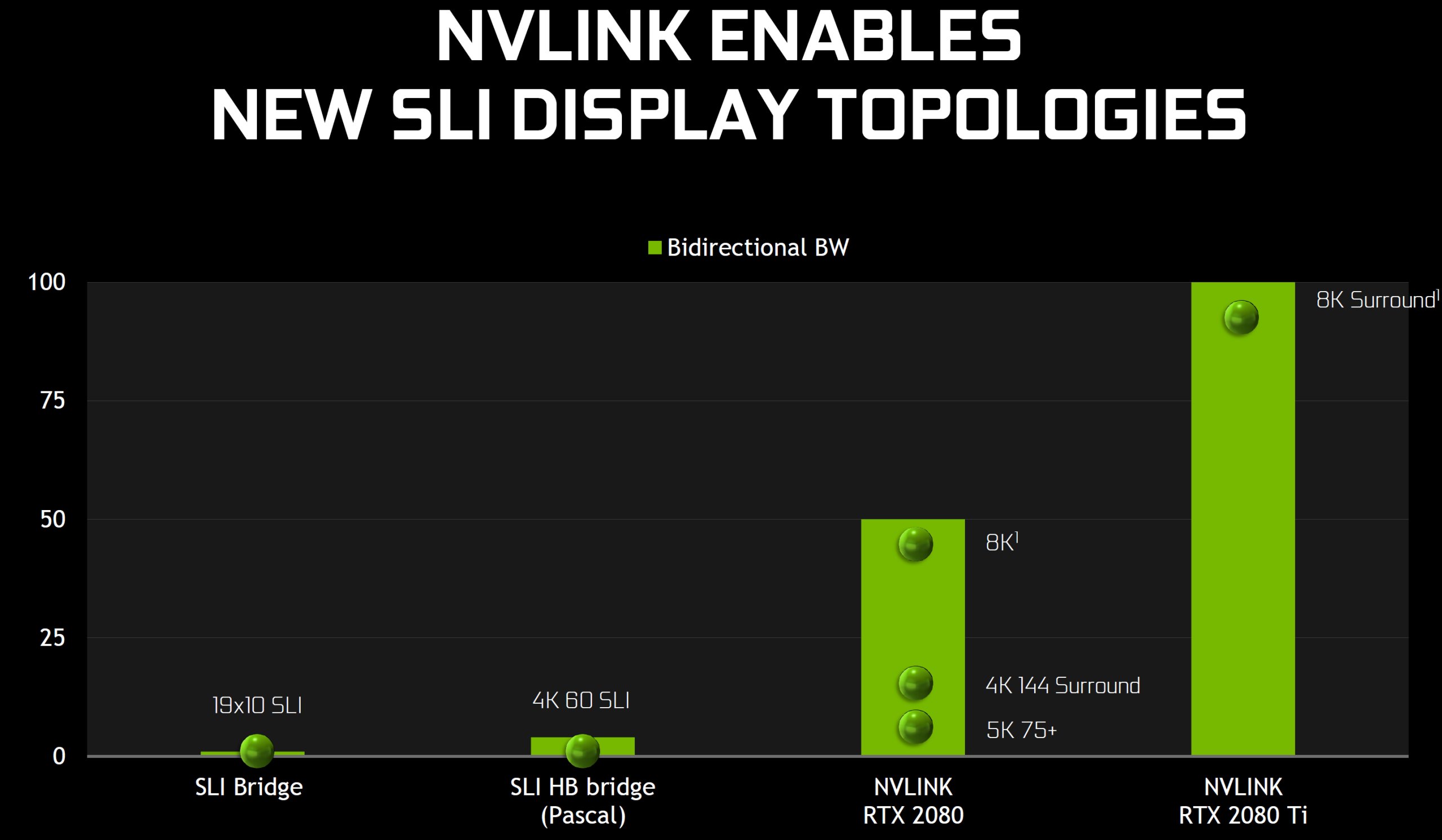The TU102 and TU104 are Nvidia's first desktop graphics processors that control the NVLink connection instead of a multiple input/output (MIO) interface for SLI support. The former provides two x8 links, while the latter is limited to one. Each connection provides up to 50 GB/s of bidirectional bandwidth. Thus, GeForce RTX 2080 Ti is able to transfer up to 100 GB/s between the cards and RTX 2080 still half .
However, a link or two, SLI via NVLink only works with a pair of GeForce RTX cards arranged at three or four slots (they need at least one empty slot between them for airflow). Officially, the PASCAL-era GPUs had the same two-card maximum. Technically, however, up to four high-quality GeForce GTX could work together in a handful of benchmarks. We have said goodbye to this.
Some of the problems of the last generation were caused by bandwidth restrictions caused by the SLI bridges. Compared to the 1 GB/s MIO link of the original SLI interface, the implementation of Pascal has brought about 4 GB/s. This was fast enough to return the rendered frame of the second card to the motherboard in time to allow smooth output to a 4K monitor at 60Hz. But it couldn't have competed with 120Hz or more, which is what many of the highest-quality gaming displays offer today.
Even in a single-link configuration, NVLink can move data so quickly that SLI is even possible on an 8K screen. The operation of 4K monitors with 144 Hz in surround mode is no problem. Two x8 connections even provide the throughput required for 8K displays in Surround.
The question now is: who cares? AMD and Nvidia have done such a "good" job on multi-GPU configurations that our readers rarely, if ever, ask for benchmark results with an SLI setup. Previously, clever players used SLI to achieve the performance of high-end cards even with significantly cheaper mid-range cards. Nvidia has been putting an end to this for some time by removing support for smaller models in the portfolio.
Now the GeForce RTX 2070 also lacks the NVLink connector – a rogue who thinks evil. Older DirectX 11-based games still run well on two cards, and a handful of DirectX 12-based titles use the EXPLICIT multi-adapter control of the API. But the fact that developers like EA DICE prefer to invest time in new features such as real-time ray tracing rather than optimizing multi-GPUs says a lot about the future of SLI.
Incidentally, we have heard that Nvidia representatives thought that they would have more to discuss in this regard in the future. At the moment, NVLink support on GeForce RTX 2080 Ti and 2080 Ti is an innovation, especially since we can focus on playable frame rates at 4K and G-Sync to guarantee playback smoothly.
- 1 - Einführung und Vorstellung
- 2 - TU102 + GeForce RTX 2080 Ti
- 3 - TU104 + GeForce RTX 2080
- 4 - TU106 + GeForce RTX 2070
- 5 - Performance-Anstieg für bestehende Anwendungen
- 6 - Tensor-Kerne und DLSS
- 7 - Ray Tracing in Echtzeit
- 8 - NVLink: als Brücke wohin?
- 9 - RTX-OPs: wir rechnen nach
- 10 - Shading-Verbesserungen
- 11 - Anschlüsse und Video
- 12 - 1-Klick-Übertaktung
- 13 - Tschüss, Gebläselüfter!
- 14 - Zusammenfassung und Fazit



































Kommentieren